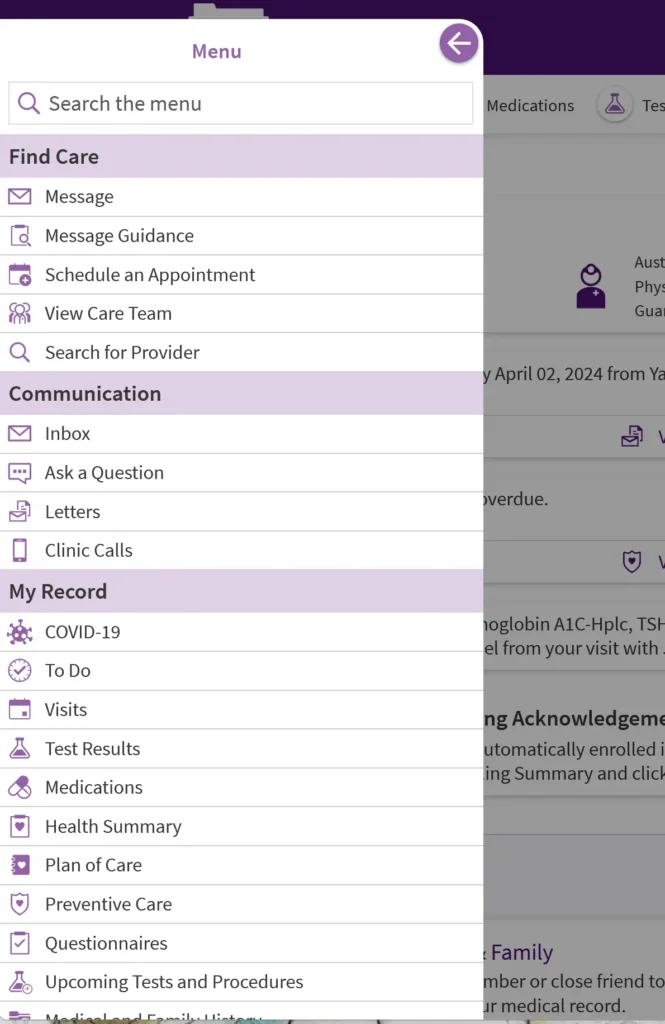
Identify common problems for healthcare website improvements
Can you say your healthcare website is 100 percent effective for your patients? Likely not.
Chances are pretty high that the website you use to inform and attract patients needs improvement. The trick is how to identify what works and what doesn’t on your healthcare website.
Websites for healthcare organizations have special considerations because of their content and the audiences they reach tend to be very broad.
In this article, we’ll explain common issues on healthcare websites and how to pinpoint them so you can make improvements.
Quickly navigate this article
What makes a healthcare website different
On the surface, a healthcare website can appear to be pretty straightforward. Patients visit the website to research an organization and make an appointment. In reality, this flow is much more complex.
Diverse user base

General healthcare websites deal with a variety of people from many different backgrounds. Even healthcare organizations that offer a single specialty may have people from a wide variety of backgrounds with different needs and pain points.
For example, let’s consider an optometry office. An optometry patient needs glasses. Or maybe they don’t. Maybe they just need their eyes checked to meet requirements for a sport or job. And for those who do need glasses, they could come from a variety of different backgrounds, locations, genders, ethnicities, and more. Even an optometry office that narrows its focus to patients at a certain income level with VSP insurance coverage still has a very broad patient base.

If the office doesn’t consider the wide range of needs for its patients it runs the risk of excluding too many people and missing the mark.

Also, patients may be the primary audience, but they may not be the only audience. Other medical offices, insurance payors, prospective employees, and internal staff may also rely on a website and have their own needs and goals.
Content
Content on a healthcare website is also unique. Patients seek out a wide range of information, which could include:
- Doctor biographies
- Medical condition symptoms
- Procedure instructions
- Consent forms
- How to access or transfer medical records
- Location information
- How to contact a specific department
It can be difficult to make all of this information accessible to patients without overwhelming them in the process. And once patients reach the content, can they understand it? Healthcare organizations can fall into a trap of using medical jargon without realizing that people outside the industry don’t understand it.
Common problems found on healthcare websites
Healthcare websites have unique challenges because of the content they provide and diverse user base. Here are some of the most common problems we’ve found on healthcare websites.
Poor accessibility
When a site meets accessibility standards, it considers how people of all abilities are able to use the site. We’ve found websites with these common problems:
- Lack of screen reader compatibility
Accessibility overlays promise to make websites accessible, but often do the opposite. They can actually interfere with assistive technologies like screen readers.
Also, when a website disables or doesn’t pay attention to keyboard navigation, labels, or uses HTML tags for styling, it can cause problems for users who rely on screen readers and other assistive technologies. - Low text contrast
Another common problem is when text doesn’t have enough color contrast with its background, making it difficult for people to read. People of all abilities must be able to clearly read website content. Choices in color and font size have an effect on this. - Images missing alt text
Not every user can view the images on a website. The alt text is used to describe the contents of an image, and it’s most important for non-decorative images that are important for the content. It’s also important for Google, which will ding a website for missing the alt text of images.

Complex navigation
Healthcare websites often need to include a large amount of information. That can make navigation a challenge. Patients can find it hard to locate specific information when menus are poorly structured or the site architecture is complex.


Non-responsive design
While rare, we still occasionally run across websites that don’t adjust content to display well on mobile. Responsive design means that the content rearranges to optimally display on whatever device the patient uses. A website that doesn’t adjust well to various screen sizes can be difficult to read and navigate.
Outdated information
Healthcare websites must provide up-to-date medical information. However, some sites fail to regularly update their content, leading to outdated treatment guidelines, contact information, or health news which can mislead users.
Overuse of medical jargon
While healthcare professionals understand medical terminology, the typical patient may not. Websites heavy with jargon can be alienating and difficult for laypersons to understand, which reduces their effectiveness.
No clear calls-to-action
A healthcare website should guide users clearly towards actions like making appointments, contacting professionals, or where to go for emergency services. Missing or unclear calls-to-action can lead patients down a one-way path that strands them without being able to do anything.
How to identify what’s working and what doesn’t on a healthcare website
Fortunately, user experience design and research methods can help uncover not only common issues, but also the problems you can’t easily uncover on a healthcare website.
Each of these methods offers a different perspective on how your website operates and interacts with its patients. By combining several approaches, you can get a comprehensive view of what works well and what could be enhanced.
Focus on your healthcare website users through a combination of qualitative and quantitative research to uncover issues.
Usability testing
One of our favorite methods for finding problems is through conducting usability tests. This is where real users complete tasks on a healthcare website while being observed. This method can identify navigation issues, understand how easily users find information, and detect other usability problems that might not be evident through other forms of testing.
Heatmaps and click tracking
Use heatmap tools like Hotjar or Crazy Egg to visually understand what parts of your website users interact with most. This can highlight which areas attract the most attention and which are ignored. Some of these tools can also record user sessions so you can see exactly how users navigate your site. Watching these recordings can highlight unexpected navigational issues or areas where users seem to struggle.
Competitive analysis
Comparing your site with competitors can identify what they might be doing better and what strategies they use. This technique provides insights into design, functionality, or content that could be included on the healthcare website.
Qualitative feedback
Surveys, feedback forms, and forums can all provide additional qualitative feedback that can tell you why things happen, instead of just letting you guess. These can provide insights into what users think about your website, including what they find helpful or frustrating.
Don’t forget to evaluate healthcare content
It’s just as important to regularly review every page of content on a healthcare website.
Health literacy evaluation
Do patients actually understand what they are reading? Since healthcare websites often deal with complex information, you should evaluate the readability and clarity of the content. Tools like the Readability Test Tool or the Patient Education Materials Assessment Tool (PEMAT) can tell you whether your content is accessible and understandable to a wide audience, including those with limited medical knowledge.
Content evaluation
Regularly review the content for medical accuracy and timeliness, because healthcare information updates frequently based on new studies and understanding. Patients will lose trust and your organization will lose credibility when content is out of date or factually incorrect.
Accessibility audits
Because accessibility is one of the most common problems found on healthcare websites, spend additional time auditing the accessibility. Use tools like WAVE (Web Accessibility Evaluation Tool), Google Page Insights, or the AXE Chrome extension to find and fix accessibility issues.
Conclusion
Healthcare website improvements range from improving accessibility and content quality to reorganizing the information architecture so that information is easier to find.
A number of tools that can help you identify some common website issues and can even provide guidance on how to fix issues.
That said, a comprehensive website audit is one of the best ways to uncover and fix healthcare website issues. Hire an expert agency like Standard Beagle that is experienced with healthcare’s unique issues to identify what works and what doesn’t.
Once the improvements are made, your patients will thank you.











